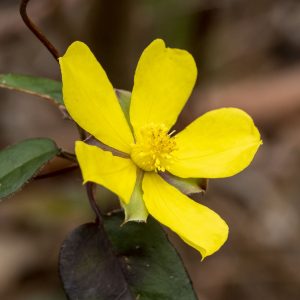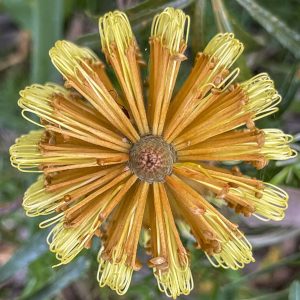This article is to inform members of a ‘process-in-motion’ that I have heard and read about sporadically lately. It regards proposed changes to botanical names, where the naming may be now thought socially inappropriate or even offensive in today’s social, cultural and political landscapes.
A blog that I subscribe to, which you may be interested in, is Herbarium World – a weekly blog about all things herbaria.
The author is Maura Flannery, Professor Emerita of Biology at St John’s University in New York. Maura writes some very interesting and not-too-long articles about herbaria and their history. There are great articles on historic plant collecting, the relevance of herbaria today, historic figures and famous botanists, important aspects of specimen collecting and herbarium storage etc.
Maura tends to produce blogs in themes or subjects, which run for about 4 weeks.
This week’s post is of strong relevance to us; once again revolving around botanic names and proposed changes. However, one thing we may not be aware of is proposed changes to names, based on their inappropriateness or offensive nature in today’s modern world. By this, we are referring to generic and/or species names that have been named after certain individuals who have a perceived chequered or ill-reputed history. The issue also surrounds species names that refer to or are linked to offensive terms and ideas. Specific instances of this, without giving exact examples, are:
- the person, whom a genus or species is named after, was an owner of slaves and was known to treat people very badly;
- the person was known to commit atrocities against indigenous peoples, i.e., the person was known to steal resources or land from indigenous peoples, or, was involved in racist agenda to persecute or disadvantage indigenous or other peoples;
Other examples include, the species epithet is a racist term or can be linked to a racist term for specific people.

One example I will point out for additional reading, is the case of George Hibbert (1757-1837) who the diverse genus, Hibbertia, is named after.
For some reading on this, I would refer you to Maura’s latest article, which refers to recently published arguments by prominent Australian and other botanists on botanic names subject to these issues. The link is here:
Taxon and Nomenclature | Herbarium World (wordpress.com)
You can subscribe to Maura’s post very easily here: Contact | Herbarium World (wordpress.com)
Blogs are emailed every Tuesday morning.
Whilst this may open another ‘botanical can of worms’, and we may agree or disagree (we might even argue “yeah…ok….where does the purge end on this?….Banksia?….heaven forbid”)…. we may see changes to names in the future, based on these arguments. It is just another issue for us to consider, as we move forward in an ever-changing world. I feel that cultural sensitivity and understanding will need to be foremost considered by us plant lovers.

